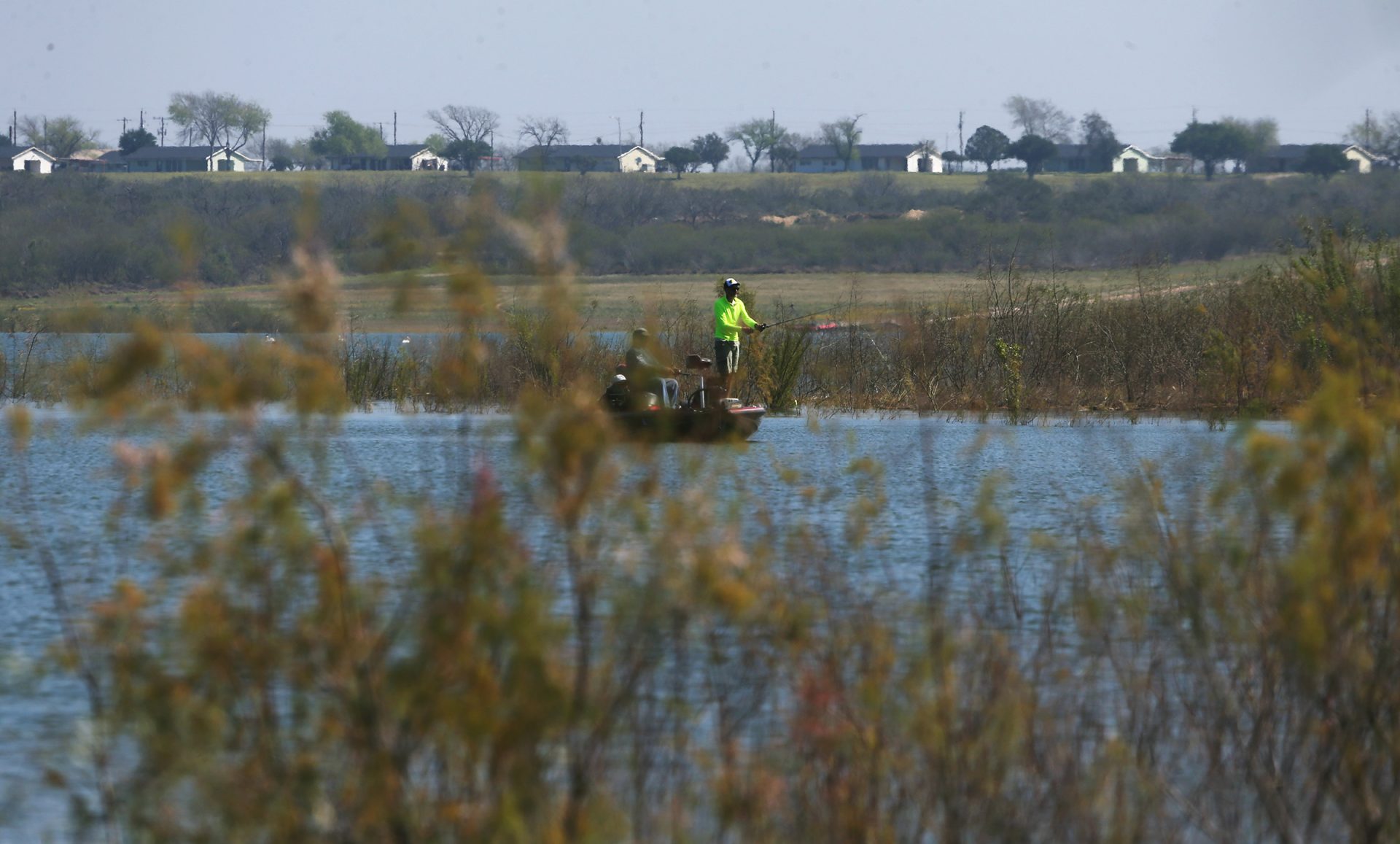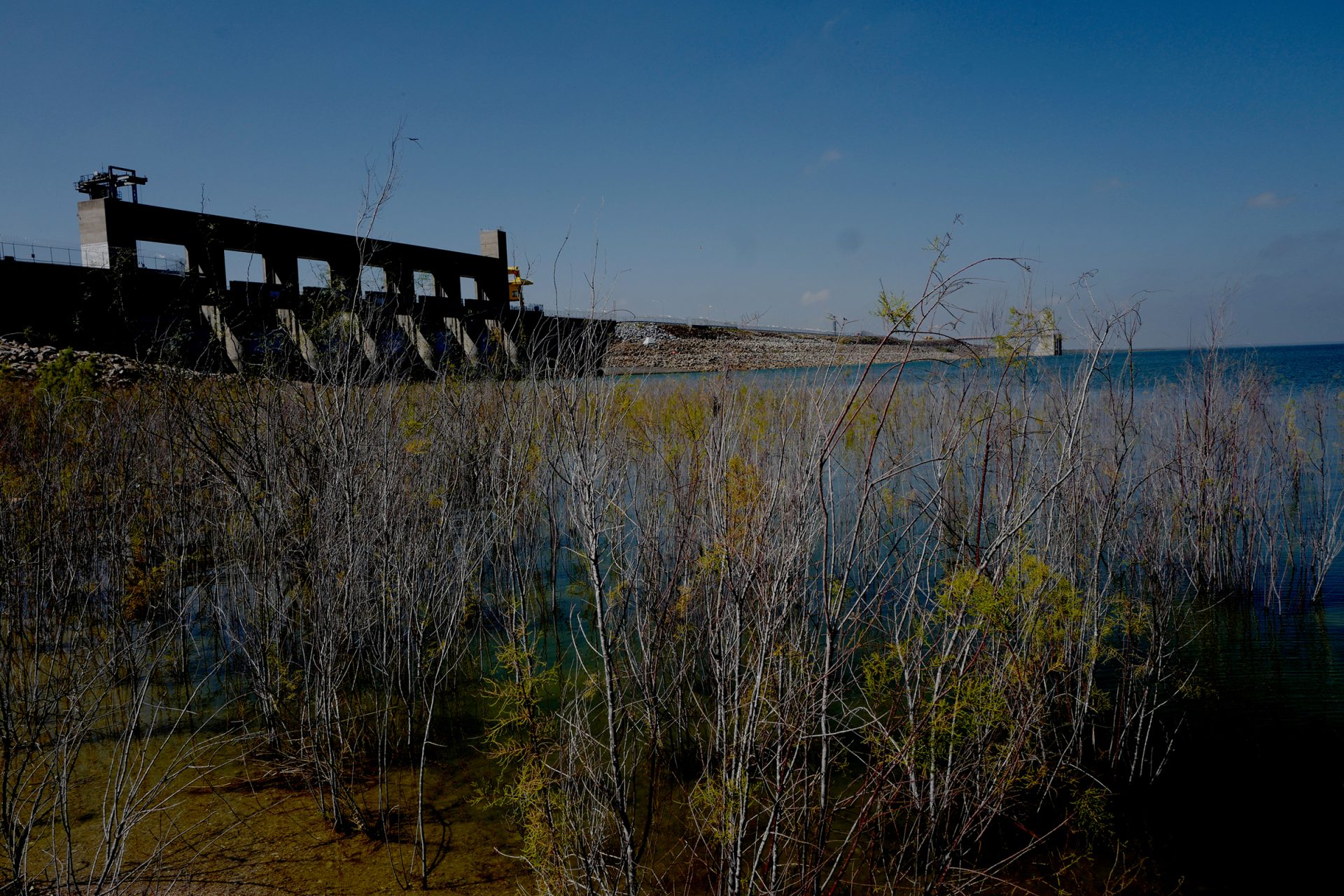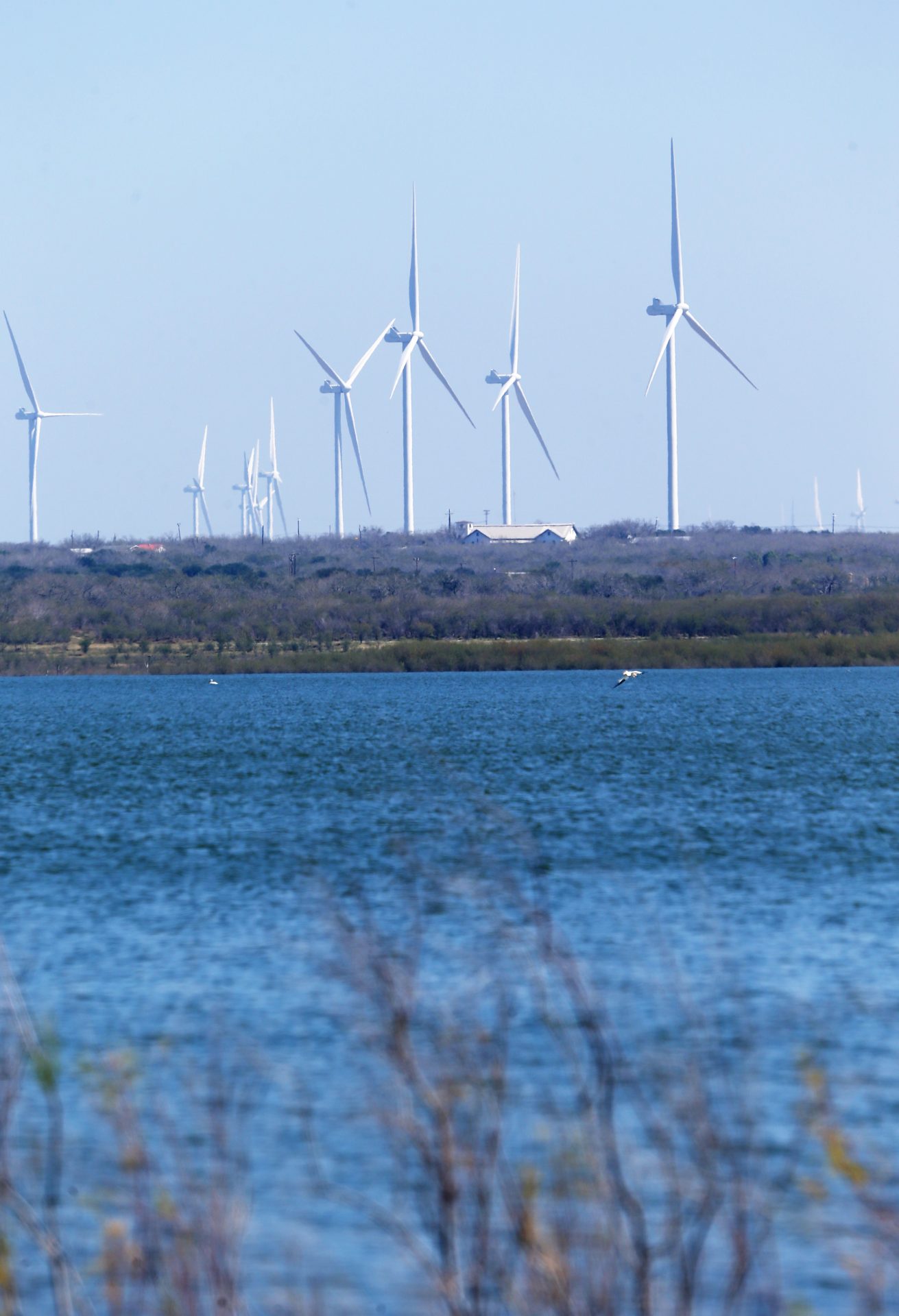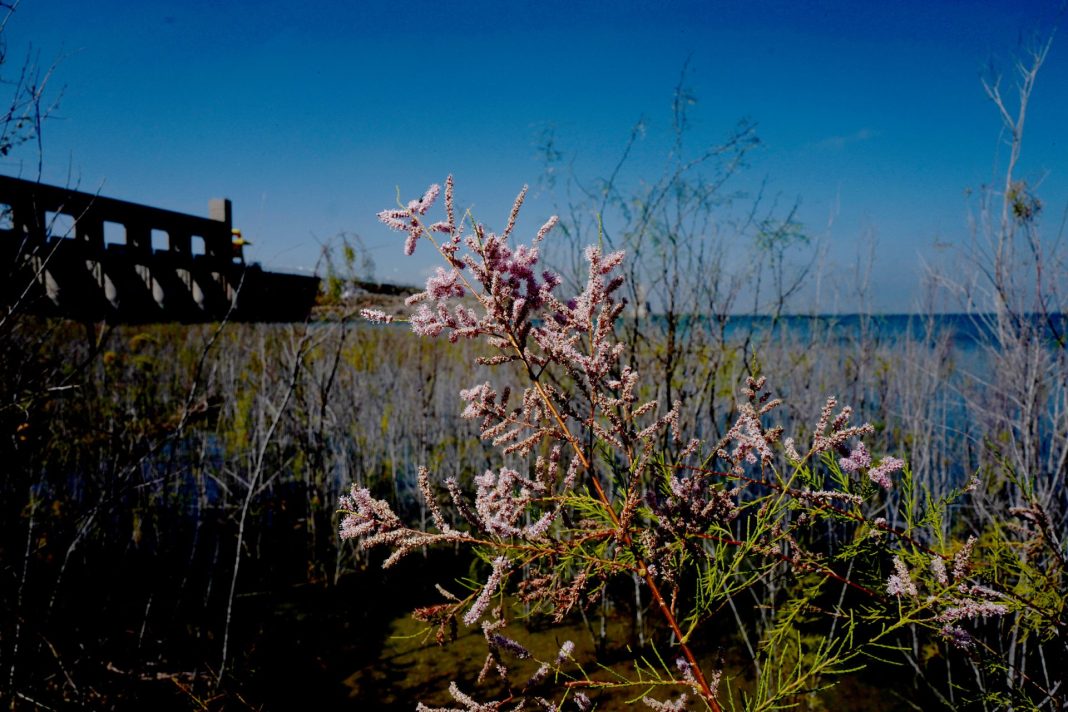|
Only have a minute? Listen instead
Getting your Trinity Audio player ready...
|

FALCON HEIGHTS — For farmers in the Rio Grande Valley, things are getting desperate.
Long months of drought, exceptionally hot summers and water scarcity on the Rio Grande have them looking at their fields in despair as options dwindle for keeping the earth productive enough to survive.
While Mother Nature has delivered horrific, but cyclical, blows to agriculture forecasts, Valley farmers have had to contend with another factor that has contributed to their inability to irrigate their fields — unreliable water deliveries from Mexico.
Mexico is obligated by a 1944 water sharing treaty with the United States to deliver some 1.75 million acre-feet of water to the Rio Grande in five-year cycles.
Ideally, those deliveries would be made in roughly equal allotments of 350,000 acre-feet per year and stored in the Amistad and Falcon international reservoirs, where Valley farmers and municipalities could access it as needed.
But over the last three decades, Mexico has consistently fallen behind on the deliveries. In the three previous five-year cycles alone, from 2005-2020, Mexico has defaulted, or come frighteningly close to defaulting on its treaty obligations.
For Valley farmers, that translates to worrying every year that officials in the mountainous Mexican state of Chihuahua — where the majority of the Rio Grande’s headwaters lie — won’t open their dam gates.
In turn, that uncertainty makes it nearly impossible for farmers to plan their upcoming seasons as other variables — drought, excessive heat and soaring operational costs — also place pressure on the ag industry.
Four years into the current cycle, Mexico is once again hopelessly far behind on its water deliveries. Thus far, it’s contributed only about one year’s worth of water.
For one local agriculture industry, that late and often nonexistent deliveries served as a death knell.
The Rio Grande Valley Sugar Growers Association, a co-op of over 90 sugarcane growing farms, announced the end of a decades-long legacy of continuous production.
“(A)fter 51 years of continuously growing and processing sugarcane into raw sugar in the Rio Grande Valley of Texas, the recently completed harvest and milling season will be its last,” RGVSG said in a news release Thursday.

THE END OF VALLEY SUGAR
The sugar growers say Mexico’s repeated failure to make timely water deliveries is directly responsible for the end of sugar production here.
As water availability has become increasingly unpredictable, sugarcane farmers have steadily reduced the number of acres in production from a heyday high of 40,000 acres to just 18,000 this past year, according to Tudor Uhlhorn, a career farmer and chairman of the RGVSG board of directors.
As growers began looking ahead to this year, some gave up and essentially took 8,000 more acres out of production by “plowing out” their fields, and leaving just 10,000 acres left for potential cultivation, Uhlhorn said.
Then, earlier this month, farmers met with officials from the International Boundary and Water Commission, which governs the water sharing treaty with Mexico and oversees water storage at the two international reservoirs.
The news the IBWC shared was not good.
Though water levels have been rising slightly at Falcon in recent weeks, it’s only because Mexico had ordered the release of some of its water from Amistad. None of it is meant for U.S. users.
“This meeting with the IBWC made it crystal clear that there’s no prospect for any additional water this year of any appreciable amount that would help us,” Uhlhorn said.
When the sugar growers’ association met the following day armed with that information, they came to a tough realization.
“We’re no longer economically viable at 10,000 acres. And so, the smart thing to do would be to deal with that immediately because this is not a liquidity crisis,” Uhlhorn said.
As of January, the coop still had $35 million in liquid assets for the upcoming season, but officials realized that a short crop — one without sufficient water — would not only produce poor results, but cost more to process.
In the end, trying to squeeze one more season out of the “capital intensive” sugar mill in Santa Rosa would quickly bleed the coop dry. As a result, the board made the difficult decision to cease production before things got to the point that the coop could not pay its growers.
“Everybody agreed that there was no path forward anymore,” Uhlhorn said.

DELAYED DIPLOMACY
Within the IBWC, news of the end of the Valley’s sugar industry — the last such operation in the state of Texas — created ripples of regret.
“I’m really sad over this and I’m sorry I wasn’t able to make the difference in time,” IBWC Commissioner Maria Elena Giner told The Monitor in an exclusive interview.
“But it still does not deter my determination to advance this and, again, work towards bringing predictability and reliability to the river,” she added.
Giner, who was appointed commissioner in August 2021, has been a stalwart advocate for water consumers on this side of the border and has attempted to implement an aggressive plan for updating the 1944 treaty.
Indeed, Uhlhorn referred to her as “the most communicative and most supportive” commissioner that he has seen in his career.
Giner had been hopeful that Mexico would sign an updated policy manual to the treaty, known as a “minute,” in mid-December, but that never happened.
Several amendments to the treaty’s terms have been made via past minutes. It’s a laborious process that involves a lot of time and even more diplomacy from the highest echelons of both governments.
On this side of the river, the IBWC had gotten all the green lights it needed to move forward with the minute, including approval from the U.S. State Department.
But just days before the scheduled signing, the state of Tamaulipas ran ads in Mexico City to protest the new minute. Soon after, farmers in Chihuahua also began to balk.
“The minute has been drafted, we had it authorized, but Chihuahua and Tamaulipas expressed their concern, and the Mexican government right now is reviewing it,” Giner said.
Mexican officials assured the IBWC that their review would be completed by the end of January, early-February at the latest.
But it’s been radio silence, just as Amistad International Reservoir reached the lowest water volume in its history, Giner said.
As commissioner, she has already begun increasing the urgency of her entreaties to the State Department, traveling to Washington D.C. for meetings with high level officials, she said.
Her hope is that the State Department will be able to coax Mexico into taking action now.
“We want them to sign the minute. We want them to approve the minute immediately. Immediately… And then we want them to utilize the tools in the minute, in other words, provide a delivery,” Giner said.

STILL NOT ENOUGH
But even if Mexico signs and implements the new treaty minute today, it won’t be enough.
Though a tropical weather system in 2022 topped off the dams at the half-dozen Mexican tributaries that feed the Rio Grande, the country simply does not have enough water in storage to meet its water delivery obligations.
“They’re so far behind… in their interior reservoirs they have 1.2 million acre-feet and it’s impossible to think that they’re gonna deliver the entire volume,” Giner said. “And they’re behind in 740,000 acre-feet. So, I mean, they would not be able to deliver that.”
And any action by Mexico would come too late to save the Valley’s sugar legacy.
“Even if we had the highest yields we’ve ever had in 51 years, by some miracle, on that 10,000 acres, it wouldn’t be enough for the mill to operate and then have anything left over to pay the grower,” Uhlhorn said.
Nor would a revival of the industry be likely, given the immense overhead costs associated with operating and maintaining the mill.
“The sugarcane cannot come back. It’s too capital intensive. It would cost $200 million to build a new mill. It would probably cost $25 million, if that mill sits for two years, to get it going again,” Uhlhorn said.
But it’s not just sugar that has been under threat from Mexico’s failed water deliveries.
A recent report by the Texas A&M Center for North American Studies projects that continued water scarcity could cause a nearly $1 billion loss of economic output in the four-county area this year.
Already, Valley farmers have stopped planting vegetable crops such as broccoli and celery due to the inability to irrigate. Onion, kale and cabbage crops could be next on the chopping block.

With little water in the reservoirs, farmers have run out of water to “pre-irrigate” their fields to prepare them for spring planting, Uhlhorn, who also grows row crops, such as cotton and sorghum, explained.
“Right now, I have no water,” he said.
Things don’t look any better for those who grow perennial crops, such as citrus.
“You can’t turn the orchards on and off. It takes years to cultivate the trees for maximum production,” Dale Murden, president of Texas Citrus Mutual, told the sugar growers earlier this year.
“Once the water stops, the trees can only survive for so long before they must be removed, and they won’t come back,” he said.
Many city water systems are reliant on irrigation canals to convey water into their municipal systems. Irrigation water “serves as the ‘push’ to move water into residential systems, without it, our irrigation districts’ ability to supply water to all users is in jeopardy,” Brian Jones, District 13 director of the Texas Farm Bureau told the sugar growers in January.
“This is not just a farmer problem,” he said.
Meanwhile, the Valley’s last sugar season has come to an end. Only a few employees remain to clean up the mill one last time.
More than 300 seasonal and 150 full-time workers — some with 30 years of experience — are now out of work.
“It’s difficult. I’m more worried about our employees and what they will do. That’s my first concern,” Uhlhorn said.
“I’m worried about the growers and worried about me, but there’s nothing I can do about it. It’s not like, oh this was a bad decision, we did something wrong. There’s nothing we can do to change reality,” he said.




